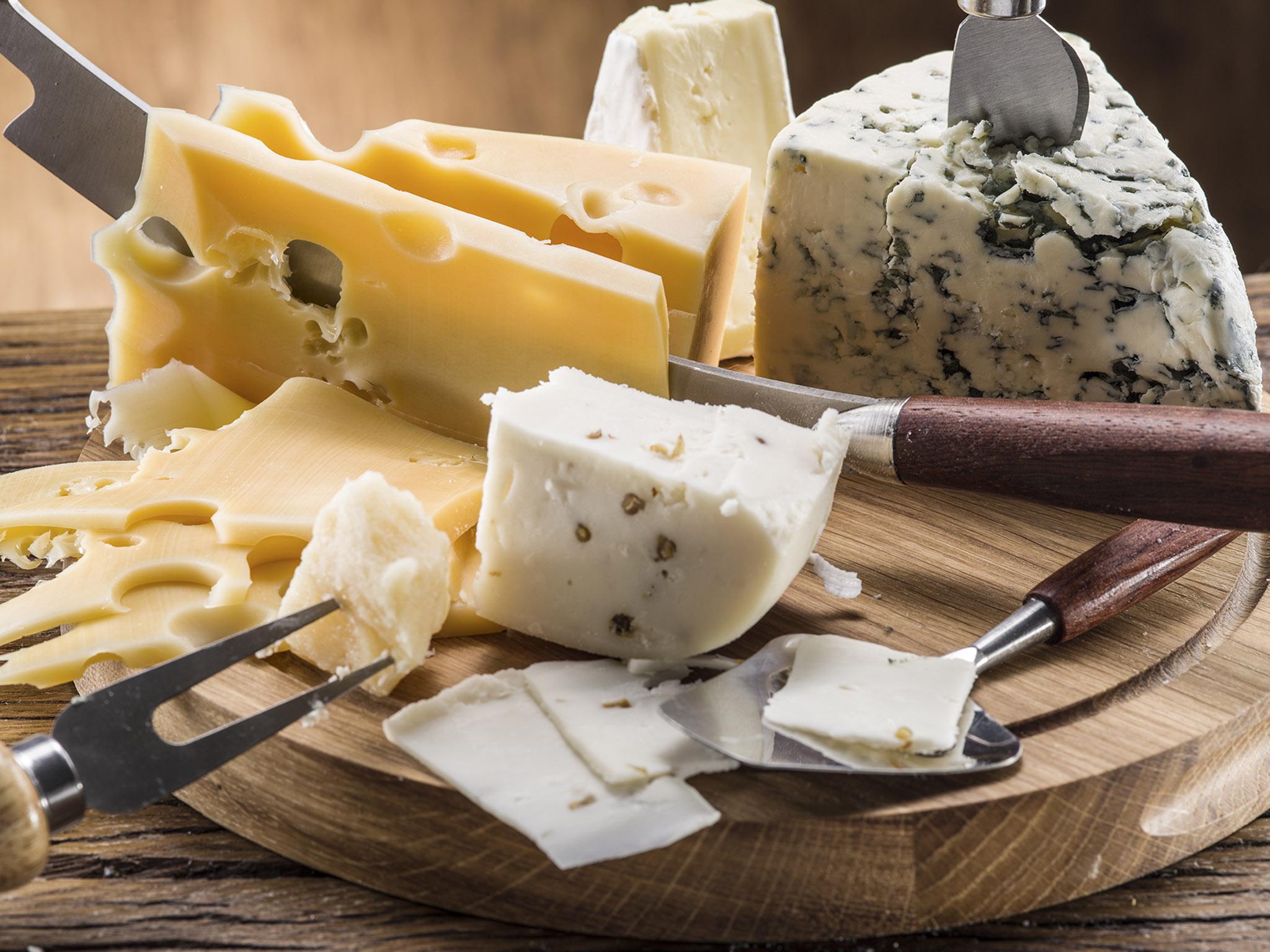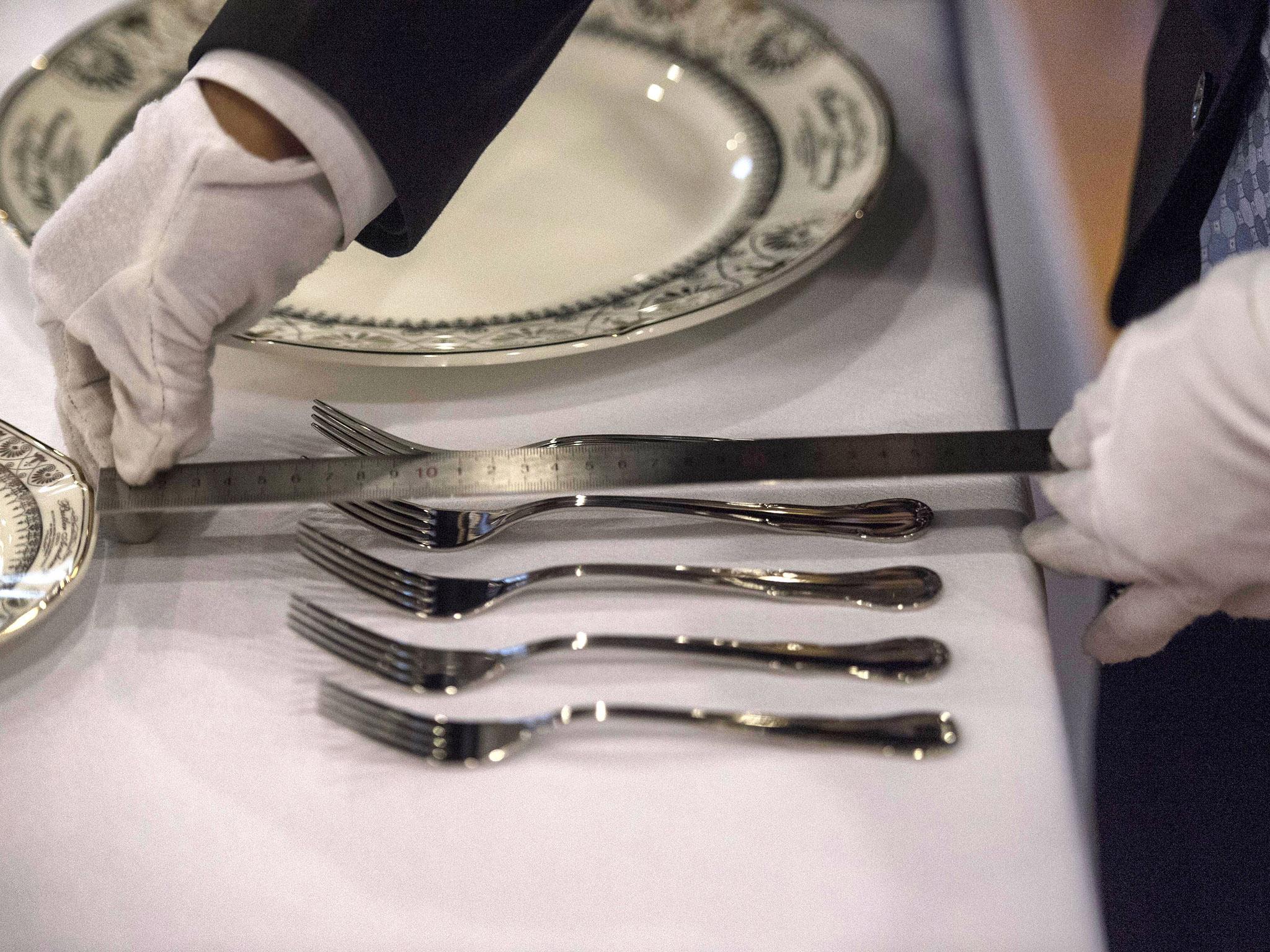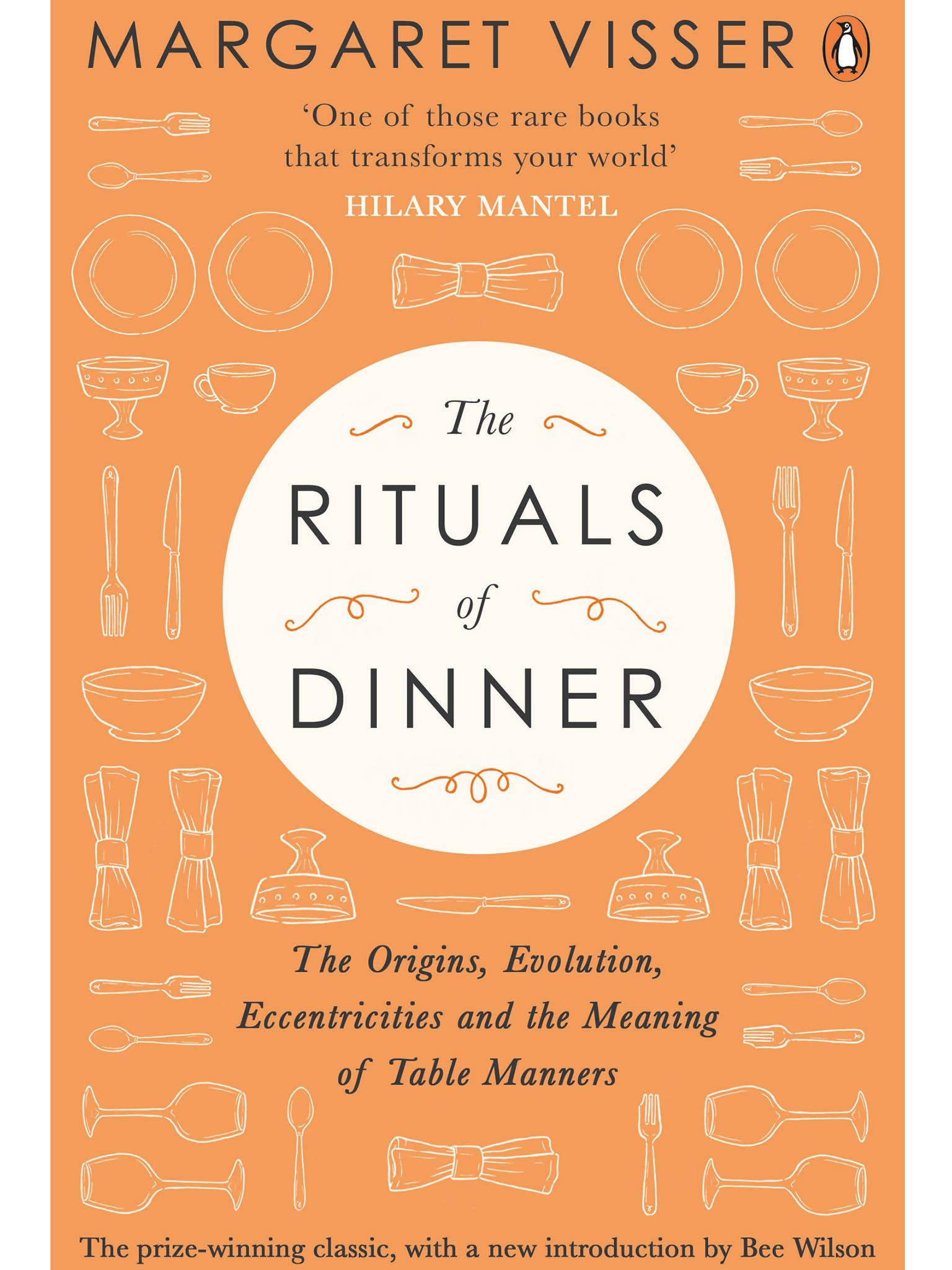Why pointing a knife at ourselves is viewed with special horror
Ancient Fijians ate normal meals with their hands but used a special fork to eat human flesh – in the first of a news series, we ask where do this and other rules and eccentricities come from?

Your support helps us to tell the story
From reproductive rights to climate change to Big Tech, The Independent is on the ground when the story is developing. Whether it's investigating the financials of Elon Musk's pro-Trump PAC or producing our latest documentary, 'The A Word', which shines a light on the American women fighting for reproductive rights, we know how important it is to parse out the facts from the messaging.
At such a critical moment in US history, we need reporters on the ground. Your donation allows us to keep sending journalists to speak to both sides of the story.
The Independent is trusted by Americans across the entire political spectrum. And unlike many other quality news outlets, we choose not to lock Americans out of our reporting and analysis with paywalls. We believe quality journalism should be available to everyone, paid for by those who can afford it.
Your support makes all the difference.Men in the West used always to carry knives about with them, finding them indispensable for hundreds of purposes – including that of slicing food at the table. Written in the 6th century, The Rule of St Benedict requires monks to go to bed dressed and ready to rise the next morning but advises them to detach their knives from their belts in case they cut themselves during the night. In the Middle Ages only the nobility had special food knives, which they took with them when travelling: hosts were not usually expected to provide cutlery for dinner guests.
To this day in parts of France, men carry with them their own personal folding knives, which they take out of their pockets and use for preference at intimate gatherings for dinner. Small boys love being given folding pen-knives with many attachments; these are the descendants of this ancient male perquisite. Women must also have owned knives, but they have almost invariably been discouraged from being seen using them. Swords and knives are phallic and masculine. In ancient Greece it was hoped women who killed themselves would politely refrain from using knives and opt for poison or the noose instead.
At many medieval dinner tables men and women ate in couples from a bowl shared between them, and when they did, men were expected courteously to serve their female partners, cutting portions of meat for them with their knives. Prevention of the violence which could so easily break out at table is, as we have seen, one of the principal aims of table manners. In the West, where knives have not been banished, we are especially sensitive and vigilant about the use of these potential weapons.
“When in doubt, do not use your knife” is a good all-purpose rule. We must cut steaks and slices of roast with knives but the edge of a fork will do for an omelette, or for boiled potatoes, carrots, and other vegetables, especially if no meat is being served with them. If a knife is needed, in a right-handed person it will be occupying the right hand. The American way is to put the knife down when it has done its work, and take up the fork in the right hand; the fork is now available for breaking vegetables as well as lifting what has been cut. Europeans hold on to the knife and have to cut vegetables with it, since the fork is kept in the less capable hand.
Before the invention of stainless steel in the 1920s, the taste of blade metal was often said to ruin the flavour of fish, especially if it was seasoned with lemon. (Fruit knives were made of silver because of the acid in fruit.) Special fish-knives were invented in the 19th century: they were silver or silver plate, ostentatiously unsharpened, and given a whimsical shape to show that they were knives whose only business was gently deboning and dividing cooked fish. Before fish knives, fish was eaten with a fork in the right hand and a piece of bread, as a pusher, held in the left. Two forks were used to serve it, and sometimes to eat it as well. Eating fish with forks long remained the choice of the aristocracy: silver fish knives and their matching forks were middle-class, a parvenue invention.

Laying one’s table with them was a sign that one had bought the family silver, instead of inheriting it and the ancient ways that it was made to serve. Fish knives have often been frowned on during this century, being thought quaintly decorative, too specialised, or over-refined; they are said to be reasserting themselves on middle-class tables. The French insist that salad should never be cut with a knife: it must be torn in pieces by hand before it goes into the salad bowl, and then, after dressing, eaten with a fork. The rule probably arose from the taste and stain of metal from a steel knife, an especial danger for French lettuce because it was always dressed with oil and vinegar or lemon. The British and Americans, who used far less “French dressing, ” have always found this French fashion effete.
Lettuce is not cut in France partly because lettuce leaves are supposed to be too tender to need cutting; in the same way, the French – overturning Erasmus’s advice in his famous book on the manners of boys – are shocked by knives being used on bread at table. The change to breaking rather than cutting bread, among the 18th-century French aristocracy, seems to have been part of the move towards an elegant simplicity in manners as the new hallmark of good taste. French bread is not usually sliced for buttering or for toasting; Anglo-Saxon methods of eating bread often require knives for spreading as well as cutting, and also the provision of butter plates. Pain de campagne, the large, solid, round country loaf of France, is correctly cut in pieces: a man may whip out his pocket knife, grip the loaf under his arm, and carve out a slice. He must cut from the outer edge and towards his own body, so that no one else is endangered by his exploit. “Viennese” baguettes, on the other hand, are soft white table bread; they are sliced, but away from the table, and served in a bread-basket. The refusal to cut them at table is a statement about the kind of bread it is, and a distinction that is being made between it and pain de campagne.
In Germany, it is rude to cut potatoes with a knife, or pancakes, or dumplings; it looks as though you think they might be tough, and also these starchy foods are thought of as almost like bread. In Italy it is never “done” to cut spaghetti. Ever since the 16th century there has been a taboo against pointing a knife at our faces. It is rude, of course, to point at anybody with a knife or a fork, or even a spoon; it is also very bad form to hold knife and fork in the fists so that they stand upright. But pointing a knife at ourselves is viewed with special horror, as Norbert Elias has observed. I think that one reason for this is that we have learned only very recently not to use our knives for placing food in our mouths: we are still learning, and we therefore reinforce our decision by means of a taboo.
We think we hate seeing people placing themselves in even the slightest jeopardy, but actually we fervently hope they will not spoil the new rule and let us all down by taking to eating with their knives again. For the fact is that people have commonly eaten food impaled on the points of their knives, or carried it to their mouths balanced on blades; the fork is in this respect merely a variant of the knife. With the coming of forks, knife-points became far less useful than they had been; their potential danger soon began in consequence to seem positively barbaric. The first steps in the subduing of the dinner knife were taken when the two cutting edges of the dagger-like knife were reduced to one. The blunt side became an upper edge, which is not threatening to fingers when they are holding knives in the polite manner. According to Tallement des Réaux, Richelieu was so appalled by the sight of Chancellor Séguier picking his teeth with a knife, that he ordered all the knife-blades in his establishment to have their points ground down into innocuously rounded ends.
It later became illegal in France for cutlers to make pointed dinner knives or for innkeepers to lay them on their tables. Other countries soon followed suit. Pointed knives for all diners were later to return to the dining-room table, but as “steak” knives, which have a special image, linked deliberately with red meat and “getting down to business” when hungry. They are still quite rustic in connotation. Cheese, which can be a very hard substance indeed, has usually required a knife to cut it, and as long as knives were pointed, hard cheese was spiked and moved to one’s plate or bread slice, or passed on the knife-point to a neighbour. So obvious and natural was this action that the Victorians found it necessary, despite the acceptance of the rounded knife-blade, to invent a special cheese-knife. It has a blade, but more than one point, like a fork; the points for impaling the cheese, however, are turned to one side, thus ingeniously preserving the blunted tip of the knife.
People had repeatedly to be reminded by etiquette manuals in the late 19th century only to transport the cheese with this knife or any other, and not to eat it from the point: “When eating cheese small morsels should be placed with the knife on small morsels of bread, and the two conveyed to the mouth with the thumb and finger, the piece of bread being the morsel to hold. Cheese should not be eaten off the point of the knife.” The morsels of bread were to protect the fingers from touching smelly cheese. In France cheese must always be handled with a knife, exceptions being made only for Gruyère and Cheddar, which may be lifted, after cutting with a knife, by piercing on forks. French children are carefully taught never to serve themselves by cutting off the point of a triangle of cheese: in something like a Camembert or Roquefort this would be to take the delicious centre for yourself, under the noses of the furious other guests.

Triangles of cheese must be cut like cake in slices which include a substantial amount of edge, and taper to the middle. An interim period followed the introduction of rounded knives, as forks began to make their way in the world. For a while, people were occasionally exhorted to eat only with the back of the knife-blade, blunted as it now often was. (As late as 1845, American eaters with their knives were advised, when putting a blade into their mouths, to “let the edge be turned downward.” For some reason, during this operation upper lips stood in greater need of protection than lower lips did.) Special knives appeared with widened, not merely rounded, blade ends. The English in the 18th century, so Le Grand d’Aussy tells us, were given to using this knife like a sort of flat spoon, even for eating peas. It was an anonymous Englishman who expressed the frustration of many by imagining a heroic solution:
I eat my peas with honey—
I’ve done it all my life. It makes the peas taste funny
But it keeps them on the knife.
‘The Rituals of Dinner: The Origins, Evolution, Eccentricities and Meaning of the Table Manners’ by Margaret Visser. Penguin, £9.99
Join our commenting forum
Join thought-provoking conversations, follow other Independent readers and see their replies
Comments